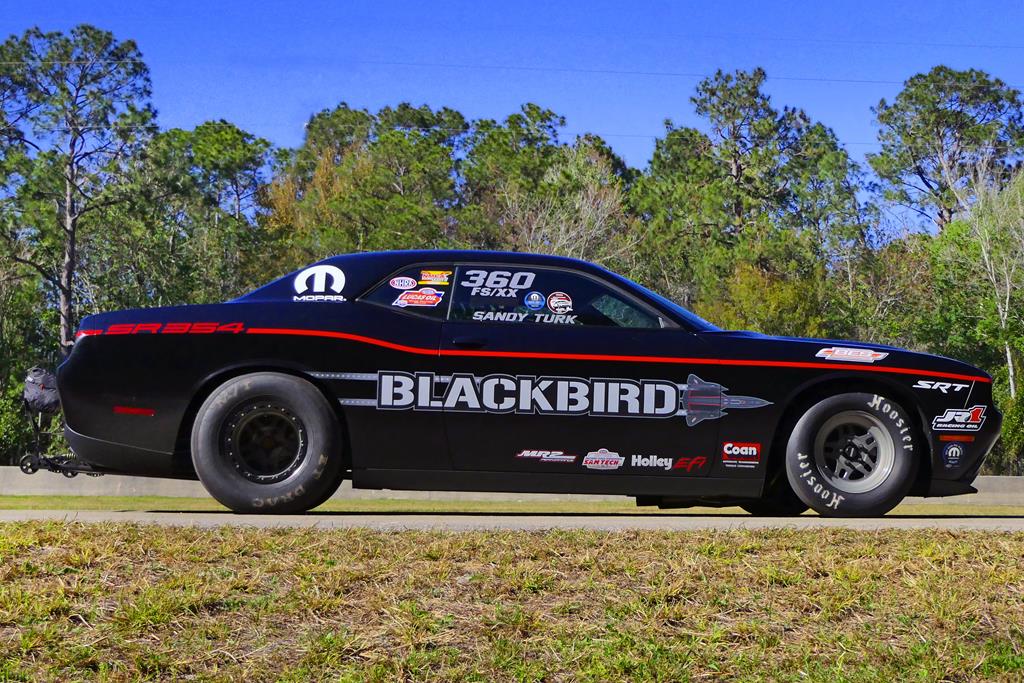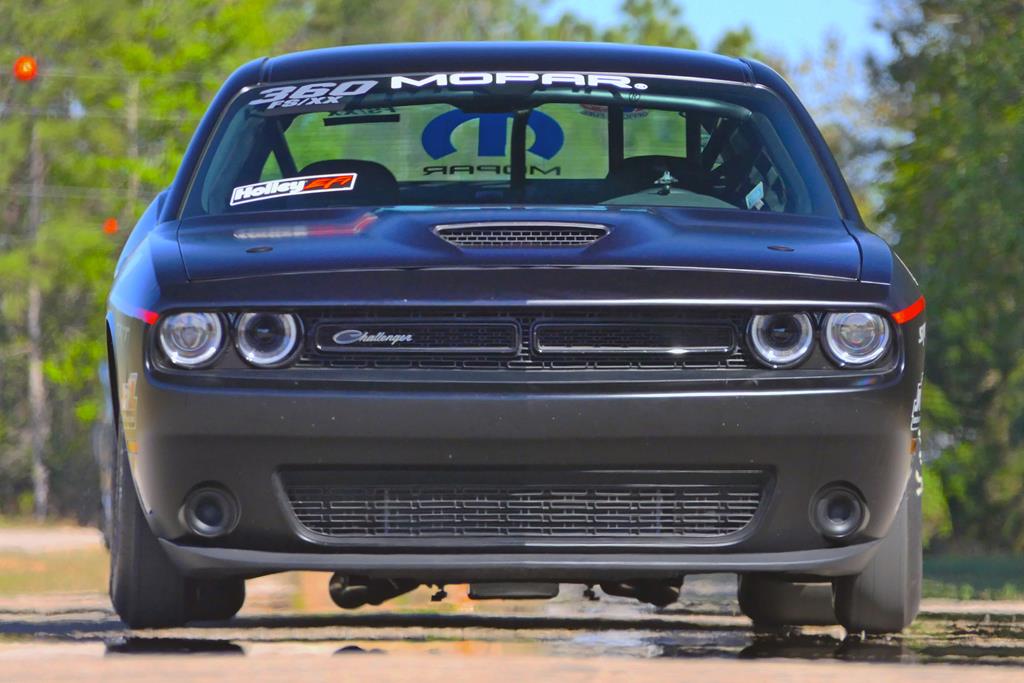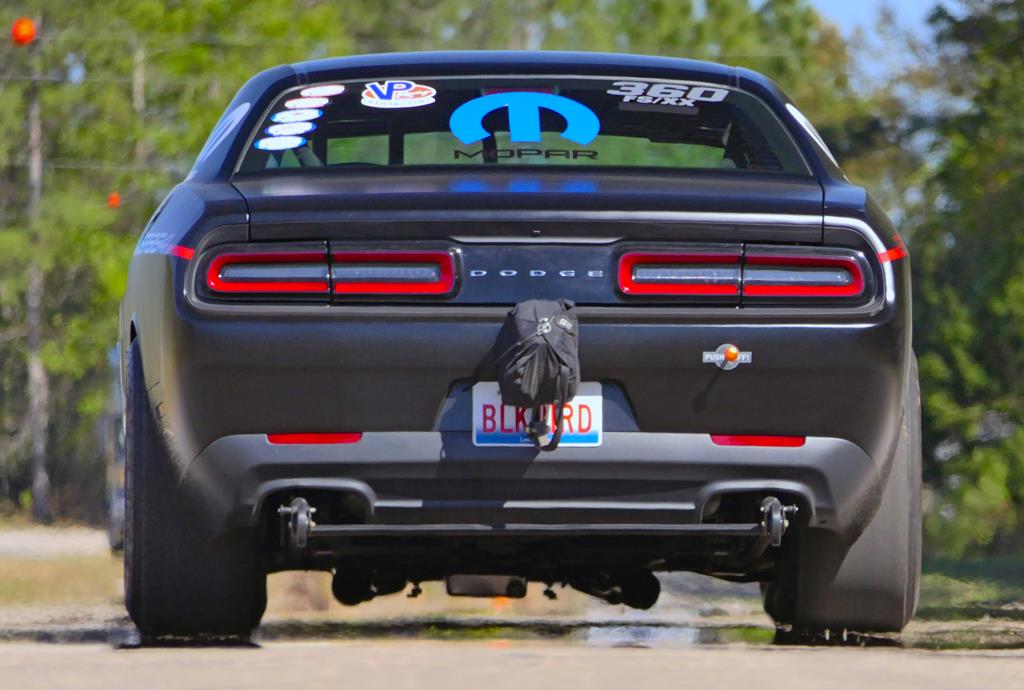Seven Seconds To Glory
Geoff Turk’s Blackbird leads the pack of America’s fastest stockers with record times in Florida and Georgia.
Story & Photos • GEOFF STUNKARD
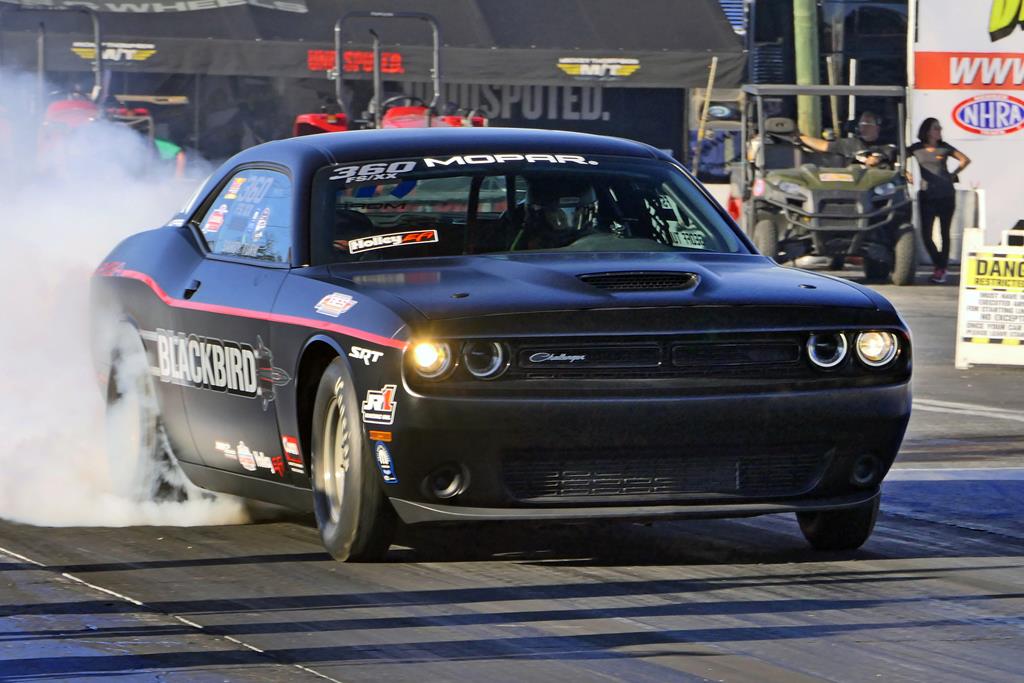
THE MARGINS OF VICTORY in drag racing can be measured in thousandths of a second. You used 4,000 of them to read this sentence.
So, to break through any performance barrier is an important achievement. One that remained until this spring was a “stock-class” 7-second run. Throw in millions of dollars in research and development money from GM, Ford and FCA/ Mopar, and the battle becomes that much more important to the history books. Hey, anybody can get lucky once. As of this writing, Geoff Turk and his SR-354 Blackbird Drag Pak has broken 7-second the barrier THREE times in the past 30 days.
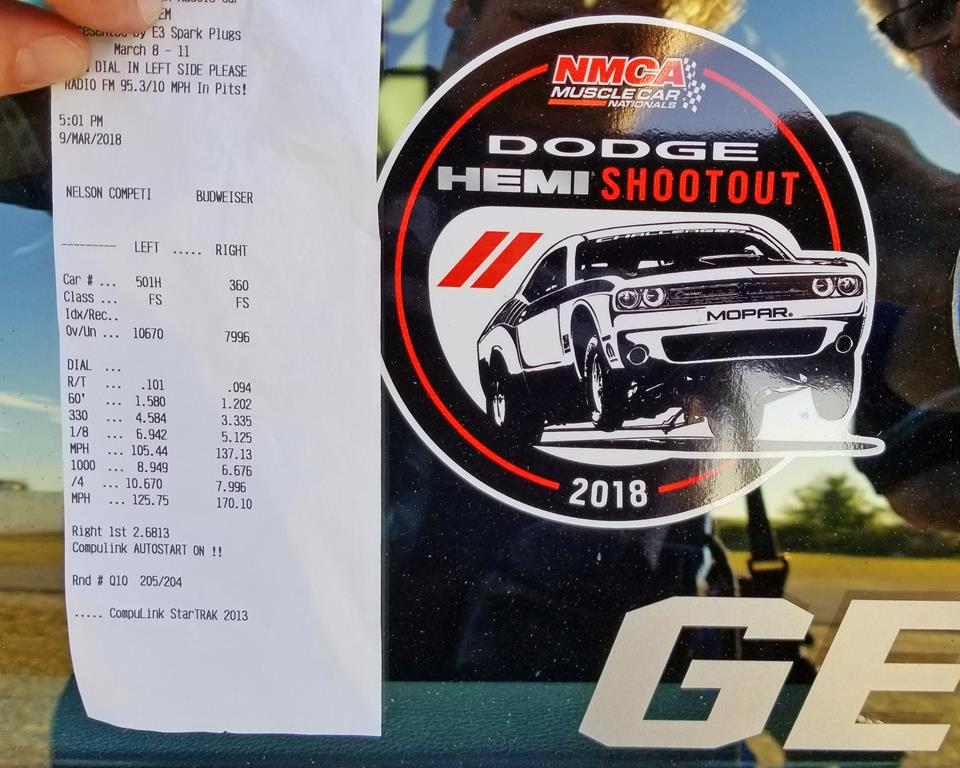
$10,000 from Holley: 7.996 at 170.10.
Turk races in a Challenger that Dodge released for 2015 called the 354 Drag Pak. Turk’s interest in technology led him to name it after the SR-71, the legendary Mach 3-capable military supersonic plane known as Blackbird. After prior V10 versions showed that Mopar might have brought a knife to a gun fight, albeit a large one but a knife nonetheless, the SRT engineering guys came up with a suitable weapon. Using a highly-effective Whipple screw compressor supercharger design atop a purpose-built bottom end that shares little interchangeability but a lot of technology with the street versions used in the blown Hellcat and Demon models, this 354˝ engine was constructed to thunder against similar limited-production COPO Camaros and Cobra Jet Mustangs. These cars are classed into the Holley EFI-backed “Factory Supercar” in NMCA and the “SAM Tech Factory Stock Showdown” in NHRA, classes that are incidentally more regulated than the Super Stock or more modified divisions.
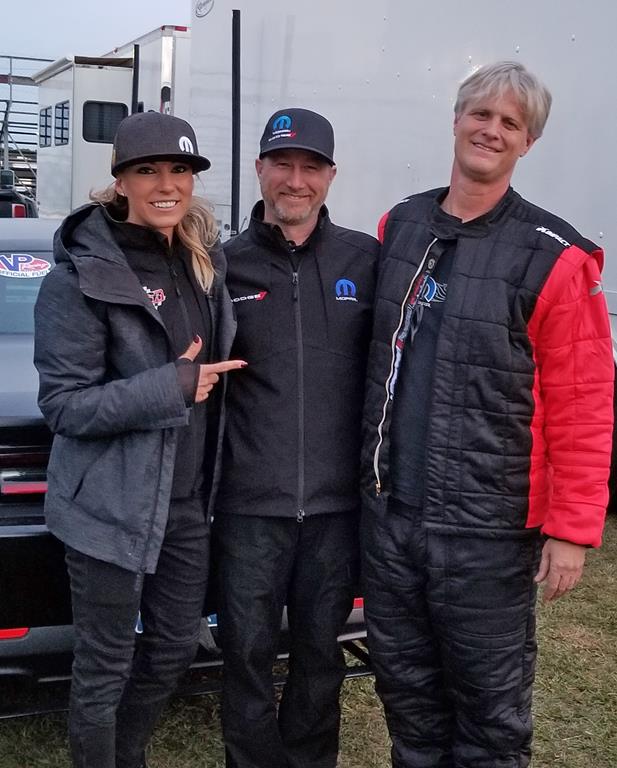
“You have to remember how much bigger the Challenger is over the other makes. It has a longer wheelbase, but it also larger, like a 5/4th version of the original,” Geoff laughs. “We all run the 3550 pounds and we all run the better engine blocks now, but the Mustang is two generations advanced from the Challenger with a sophisticated DOHC engine design. Then you have the Chevrolet LS engine, also highly developed, and the gen-3 Hemi. Anyhow, the top guys are all on the ragged edge, and they are all close because of the suspension, the tires and the blower restrictions. Still, working on these cars is nothing like working a ’68 Super Stock Hemi, which I did before doing this. The Drag Pak is a lot easier.”
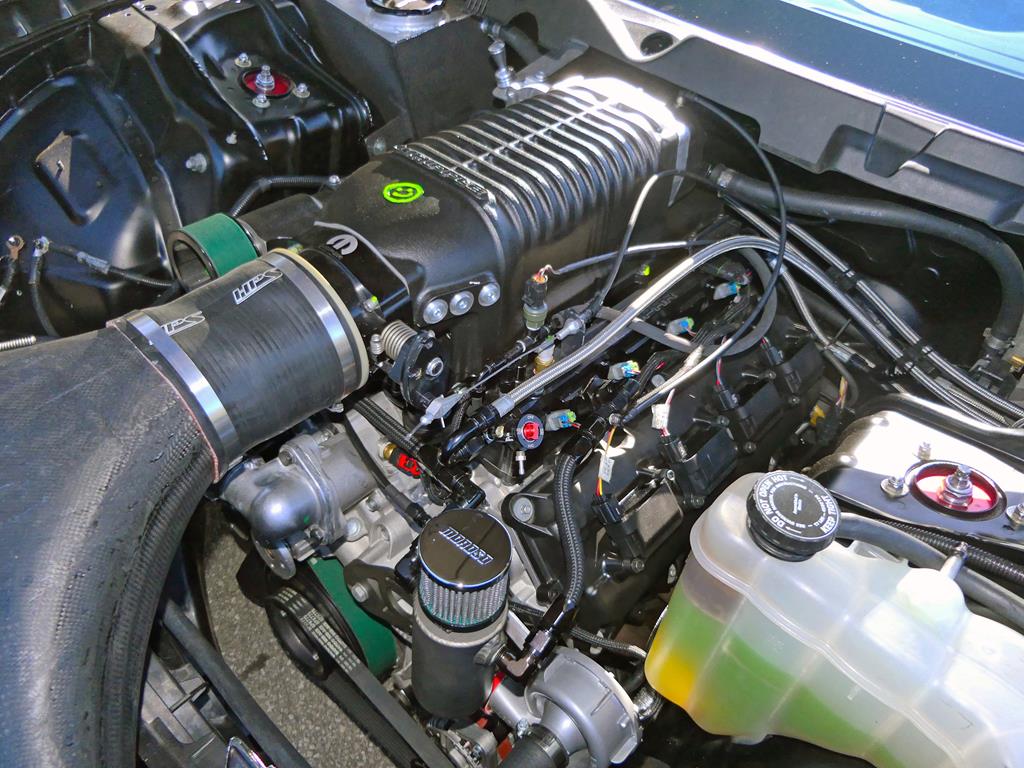
The vehicles themselves are required to have basically non-adjustable OEM- released suspensions, exacting engine specifications as released by the factory and approved by NHRA, and Stock Eliminator-size 9-inch radial ply (not soft- wall) tires, all factors that automatically limit just how much horsepower can be applied to the track. The real tricks are in the ignition and fuel curve, meaning that your laptop is the most important tuning tool to analyze data and adjust for weather and track conditions. Traction control is not permitted, and while that option might help a mediocre driver, a good one doesn’t want it anyhow. This becomes more critical at some NHRA venues since the professional nitromethane classes require less adhesion following their 1000-foot track run to prevent tire damage, meaning you sometimes get 320 final feet of “less grip” at those events, and 170 MPH on a 9-inch tire is not for sissies.
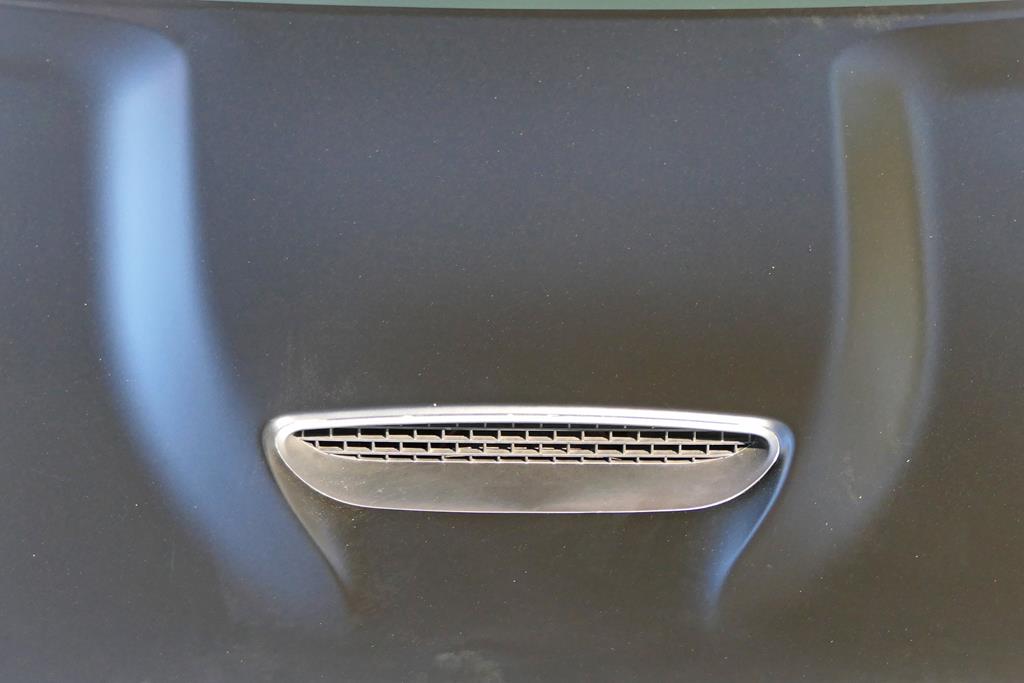
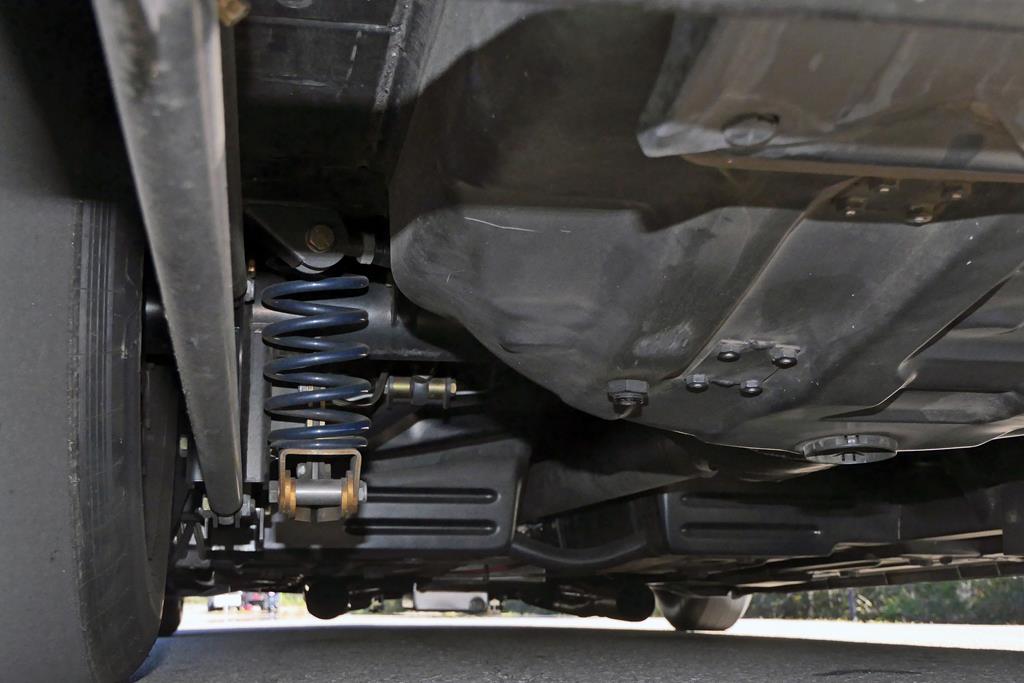
“These things are dancing on a razor’s edge,” says Turk. “It ranges from a towering wheel stand that can go a couple hundred feet out to spinning the tires violently off the starting line, or spinning them during a gear shift somewhere above 100 MPH, which will instantly want to turn the car left or right. All of that happens in a matter of milliseconds.” He adds, “When you jump off the brake pedal, you don’t know if you will see the wall, the sky or make a good run.
“When it is good, it wheelstands only a little and might wiggle on each gearshift but stays straight. It’s not trying to swing the backend around. You don’t have the drama you do otherwise, it’s so smooth.
There is no edge-of-the-seat tension because frankly you’re not as scared as you are on some passes.”
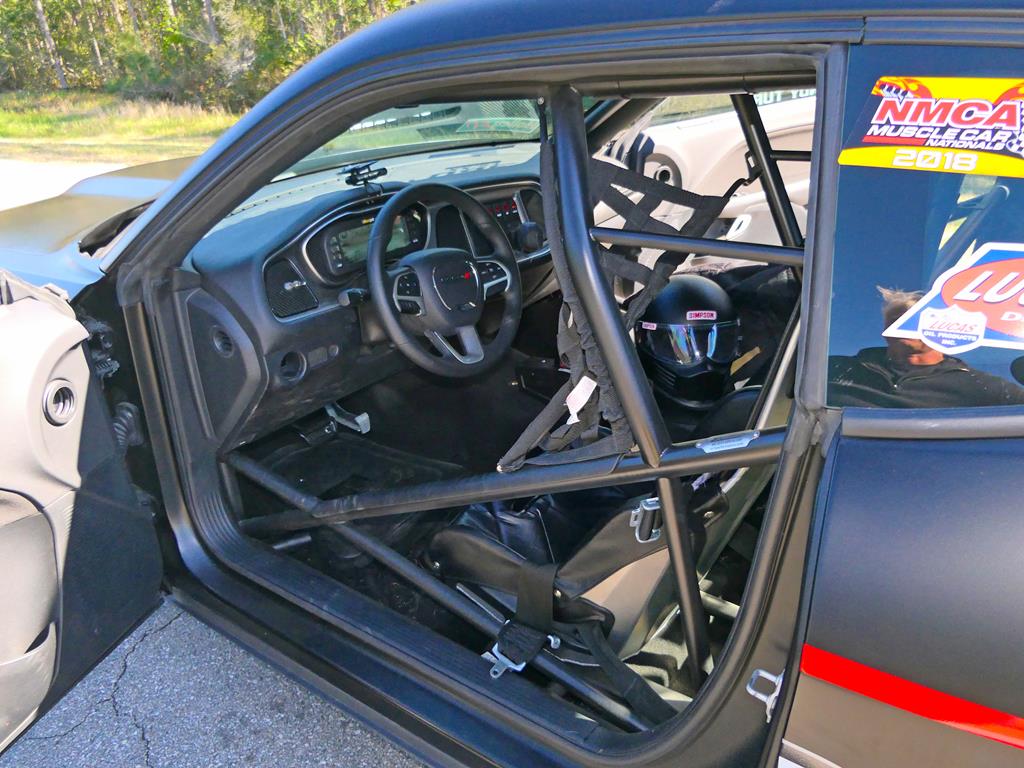
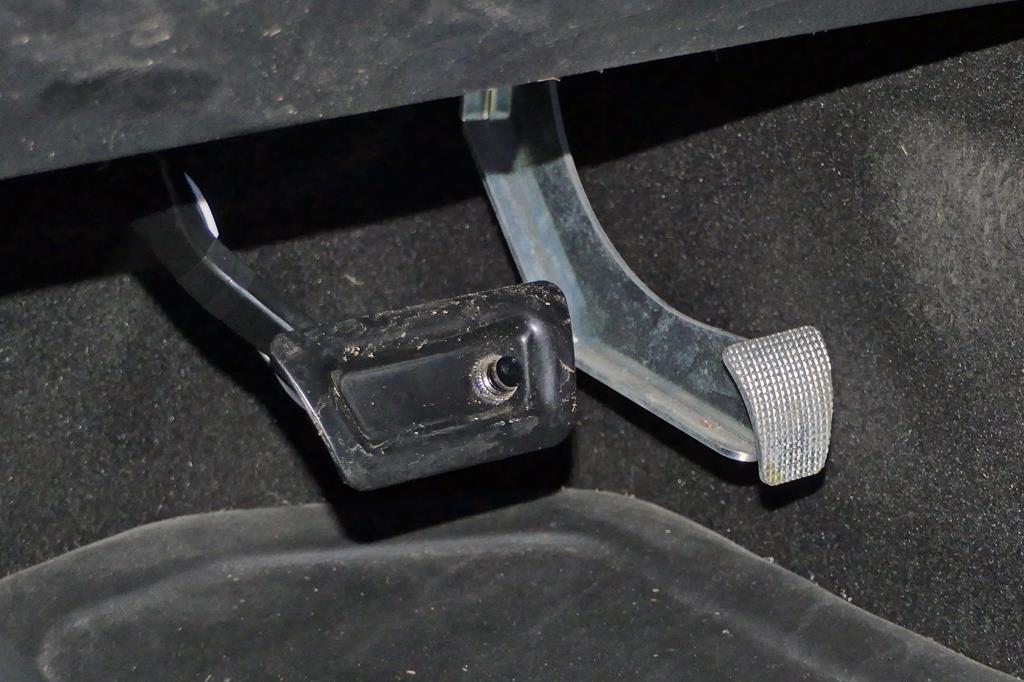
For Turk, performance is not an issue of being an overnight success. Raised in rural Illinois, he has always had Mopar drag cars, even as he did his undergraduate work at the General Motors Institute in Michigan specializing in engine technology and then had a lengthy career at Caterpillar designing products and running businesses that produce horsepower and efficiency. After a couple years helping turn U.S. Steel around, he’s semi-retired and now doing consulting work. 2018 would prove to be very important to his racing aspirations, even as he dealt with unforeseen life events.
“I had last driven the car back in November, pushing toward a ‘seven’ then, and it was pretty worn out, so I planned on a lot of work and testing in the off- season. Then my wife Sandy was diagnosed with cancer, and that changed everything.
I was actually planning on missing these races because of that, and even considered selling the car, but she insisted I come and try to do this even if she could not be with me. At any rate, we did no testing this year. My first run of 2018 was the first pass during the Thurs- day test-n-tune at Bradenton, which was a soft 8.38.”
He continues, talking about running for the record.
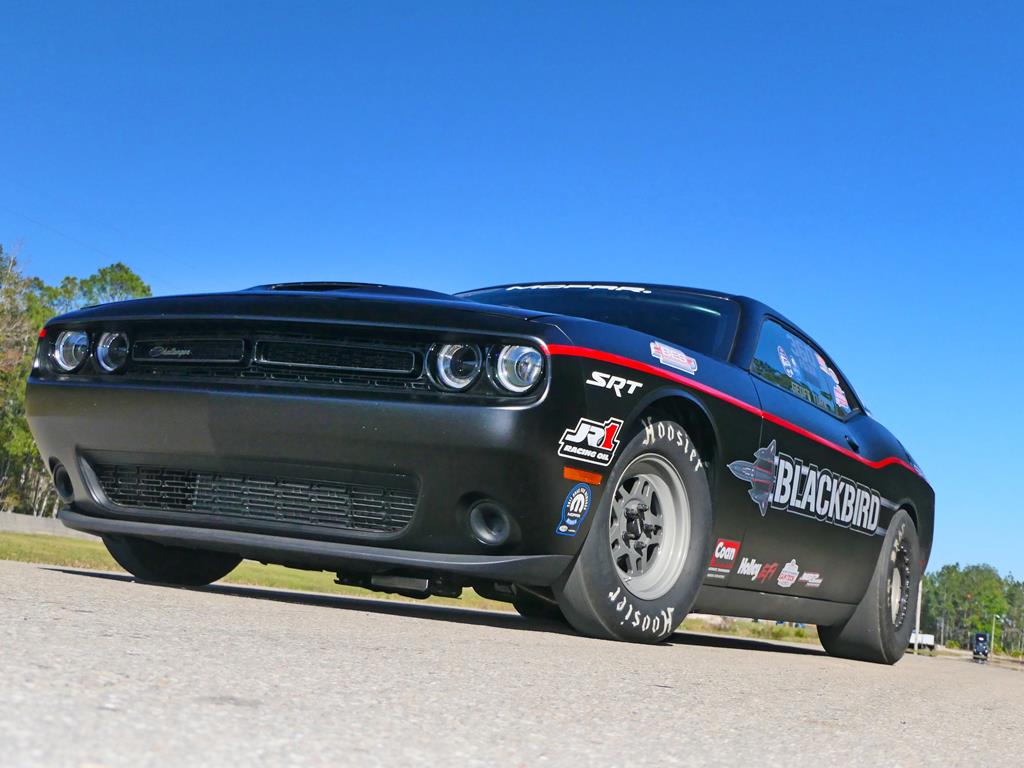
The Blackbird name was chosen for the stealth nature of the SR-71 reconnaissance plane, and Geoff has been faithful in that regard in use black-out treat everywhere. Looks the part of a bad hombre, too. Thanks to the parachute pack, that rear tag can’t be seen by those pesky traffic cameras. Tricky guy, that Geoff.
“So, you can imagine what I was thinking when I showed up, I wasn’t expecting a whole lot. I had a fresh BES-built engine in my trailer we had taken off the dyno that I knew was better than the one in the car, but I was saving that for Gainesville. Then, once we got to the track, Dave Coan came in to fix a transmission problem we had not foreseen, so I pulled the trans for a full rebuild. Even with the old engine in there, I knew conditions were about optimal on Thursday evening. Driving the car seemed boring, no wheelie or anything, but I felt it put me back in the seat and I could just tell it was screaming, still making power for an engine with 15 hard runs on it already. It went 7.975, which changed my mindset—the car was working, the beat- up engine was working, and I might actually do something here.
“Of course, that 7.97 was awesome, but it was still in testing, so it did not count for the record or the money. On Friday afternoon, during the actual qualifying that would count, I was slotted by NMCA toward the back of the group since I did not have many points from 2017. This was their first official session of the year. The air wasn’t as good, either. Again, the car felt pretty good but was not dramatic, so I wasn’t sure if it had broken through again. Then one of the other racers came up while I waited in the car for the time slip and congratulated me. I said, ‘for what?’ He said, ‘you just ran a 7.99 with a 6; you got the record!’ The people watching it live on NMCA’s inter- net feed, including Sandy, knew it before I did. Once it was checked by tech, we got the record, all the Holley money, and the special jacket for being the first, all which is very cool.”
Perhaps his biggest advantage this year is two-fold. Working with Tony Bischoff of BES Racing Engines in Indiana, Turk had already gotten the iron-block version of the 354 Drag Pak to work, running qualifying-level performances after two seasons of testing. Thanks to Dale Aldo, now retired Motorsports Marketing manager at Mopar, Turk and the SRT engineers began talking in 2017 and worked out a partnership. Turk’s teammate is Leah Pritchett, better known for her Top Fuel efforts, and the factory team car is based out of Don Schumacher Racing. Ace mechanic Terry Snyder and world champ driver Kevin Helms are responsible to keep the car ready for Leah, but Geoff parks right beside them and they all work on getting both cars into the program.
“Working with Mopar as teammates, we now have comparative data. Leah is instinctively a great driver and gives them feedback, and Allen Johnson’s new car is going to be part of this, too. My background is in engineering and the SRT guys are really brilliant, so that is cool to be working with them. Our goal is to race each other in the finals at every event.”
The second change was the allowance of an all-aluminum engine package that superseded the originally-released iron version. Yes, this is Stock, but NHRA wanted to keep all manufacturers involved and GM and Ford have gotten similar variances. Because a blown motor is, as Geoff notes, “an air pump atop an air pump,” NHRA and NMCA both pay close attention to supercharger tolerances, bottom-end technology, suspension legality and computer records to keep things even-handed. As of this writing, as one Ford clocked an 8.000 just before Turk set the record at 7.996 (remember our opening sentence), and the Chevrolets have tapped in at 8.02. That looks pretty even to us; then it becomes a driver’s race.
Turk had already served notice with the BES aluminum engine package in late 2017 when he clocked an 8.02 at St Louis, then the quickest-ever time in Stock. With a 7.97 and 7.99 at Braden-ton and an event-winning 7.994 at Atlanta three weeks later, he has a lot of people to thank.
“Well, first to the Lord above; I couldn’t have done this otherwise, and then to Sandy, who lets me do this. Without her, no way,” he says. “Mike Roth and MR2 Performance built us a truly great racecar, and Tony Bischoff and all the guys at BES have given Leah and I big, legal horsepower. Coan Transmissions and Converters, JR1 Oil, and Santhuff Suspension are all part of it, too. And Holley. I won $5,000 that Holley EFI posted for the entire class for the first 7-second run, and the $5,000 bonus for using their control system, and it really works for what we are doing. All these are companies I can go to when I need help, and that makes a big difference.
“At Bradenton, with Sandy not able to be there, my son Nigel came in to help me, and at Gainesville it was an old racing buddy, Danny ‘Red’ Brandt, who flew in and helped out. Kevin Helms and the SRT guys like Mike Rossey and Eric Cunningham have also been a huge influence in how well things go, too.”
Meanwhile, the target is running a 7-second time in NHRA competition. It is possible it will happen this year if the conditions are right. Turk was frustrated at the FSS season-opener in Gainesville. At Bradenton, where he went to the final only to lose to the Drag Pak of Joe Welch, he had indeed worn out his engine. He had the good spare in his trailer, but when there were outstanding problems with the engine in Pritchett’s car there, he agreed that they needed to put that replacement into her car to qualify, which she promptly did, and left it in for the next weekend. A secondary short-block was quickly built up and trucked down from BES, but Geoff withdrew on Saturday before round one when he broke something minor that could not be fixed in the two-hour window before eliminations started.
“There are two rivets that hold one of the engine sensors together, and all those runs on the 7-second motor had loosened them up; that motor had slowed because the timing was bouncing around by 10-15 degrees,” he says. “It still ran an 8.12 that way, but that did not win at Bradenton.”
Meanwhile, he did have a fresh engine when the NMCA’s big event in Atlanta, the NMCA/NMRA All-Star Nationals in early April. There, he ran an 8.16 to qualify 4th for the program, then ran 8.09 and got close with 8.008 and 8.004 in rounds two and three. He again pushed into the 7-second zone as the cool Sunday evening air came in, running 7.994 in defeating Ford competitor Chuck Watson. This sets Turk up as the current points leader in the 6-race 2018 NMCA series, he remains the only competitor to run 7-second times in the entire sport, and we are hopeful he will become the 2018 Holley EFI Factory Supercar champion.
“The Blackbird is a car, it’s not about me. I wanted to promote it that way, and the media has picked up on it. I owe you guys a lot of thanks for making it known.”
Yeah, us and three 7-second timeslips, notoriety and 10 grand, pal


